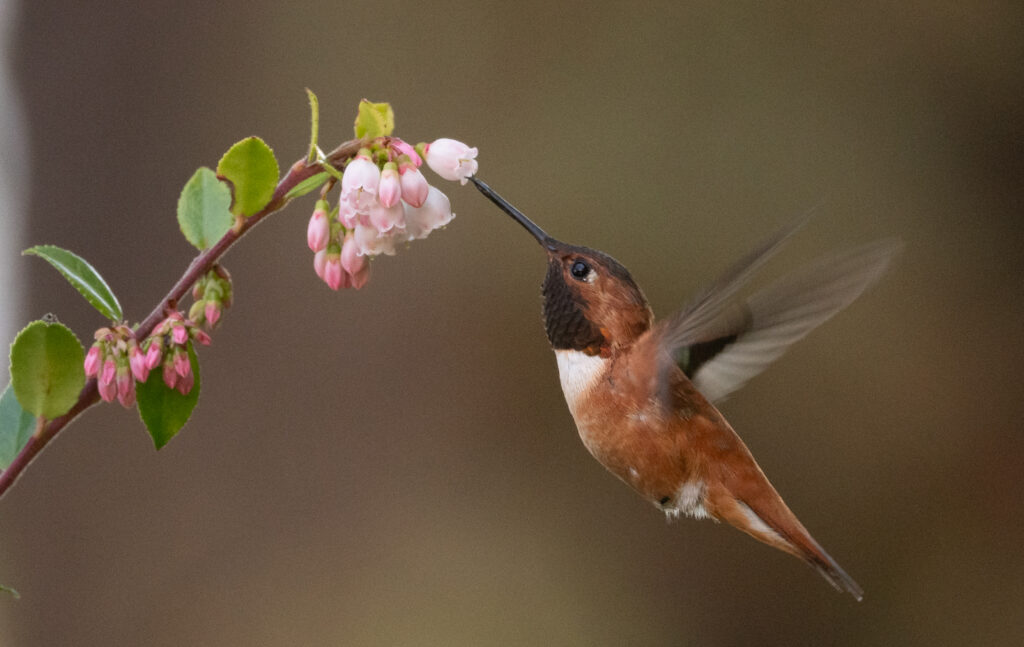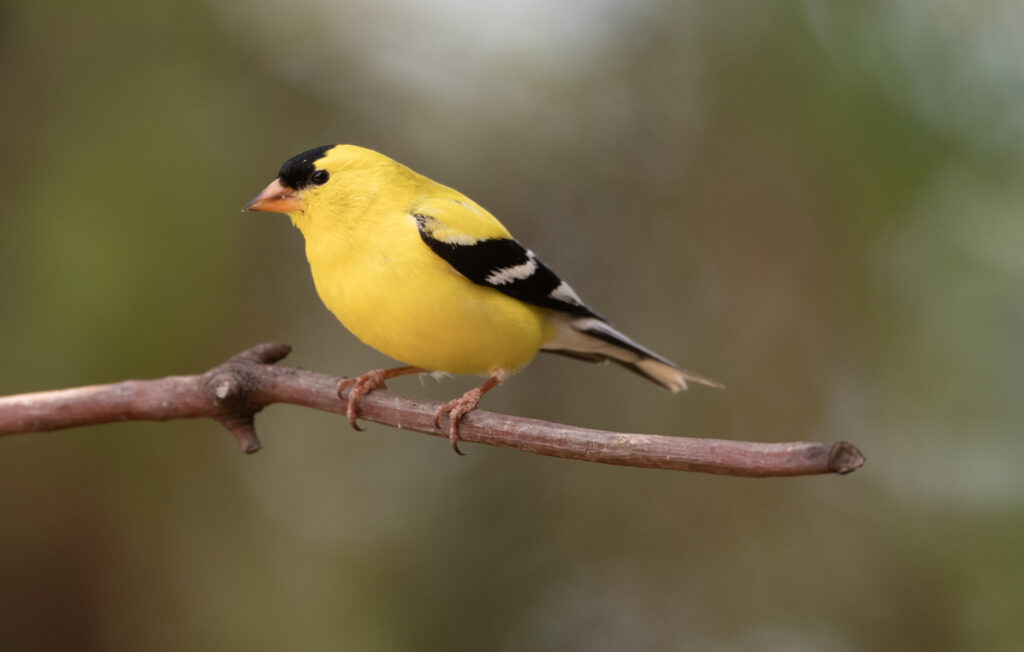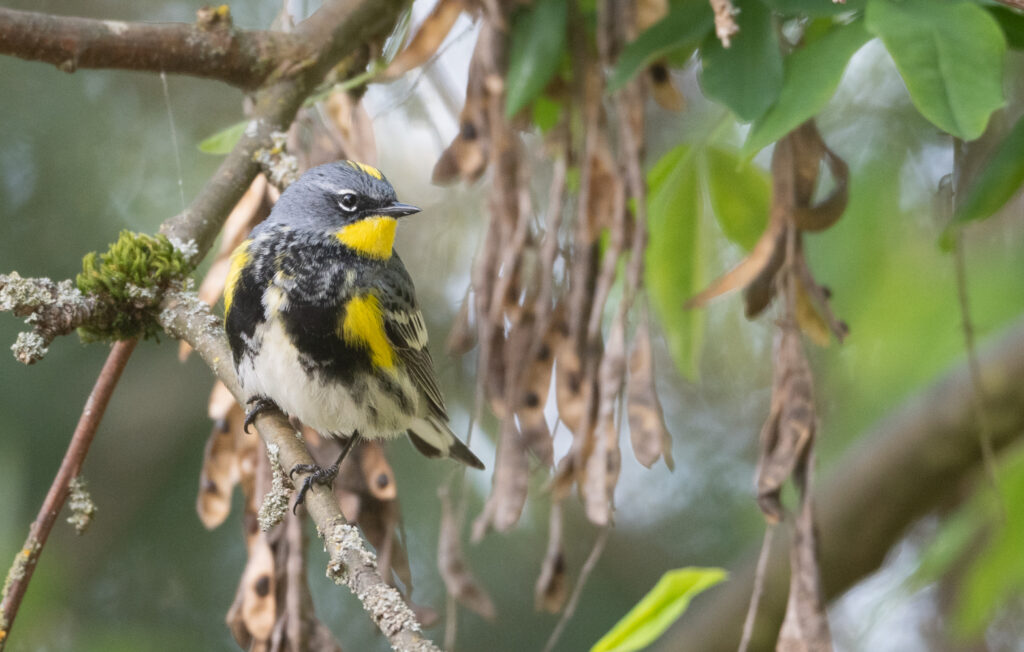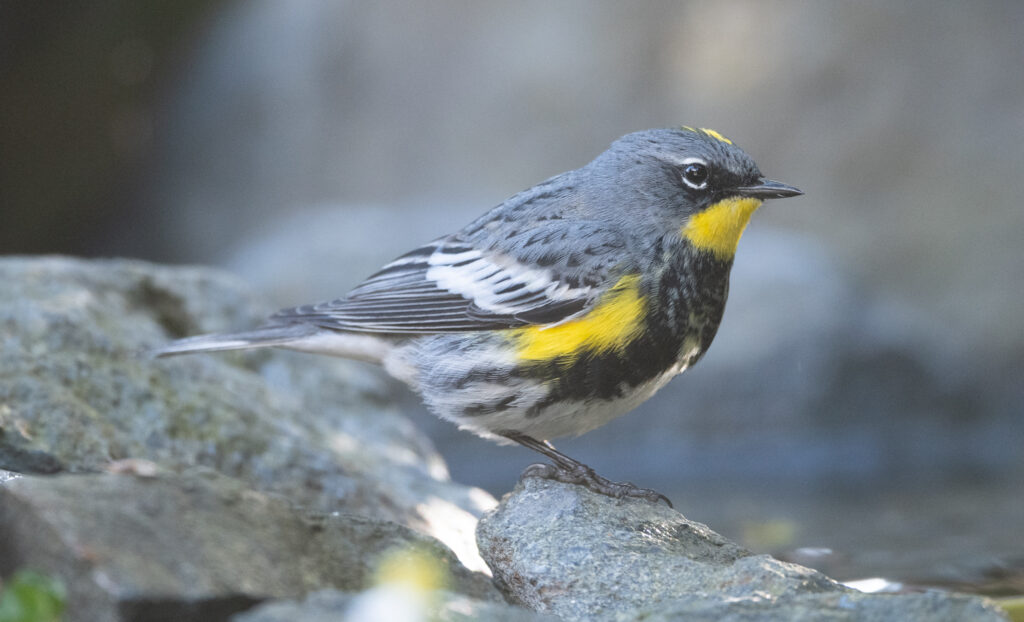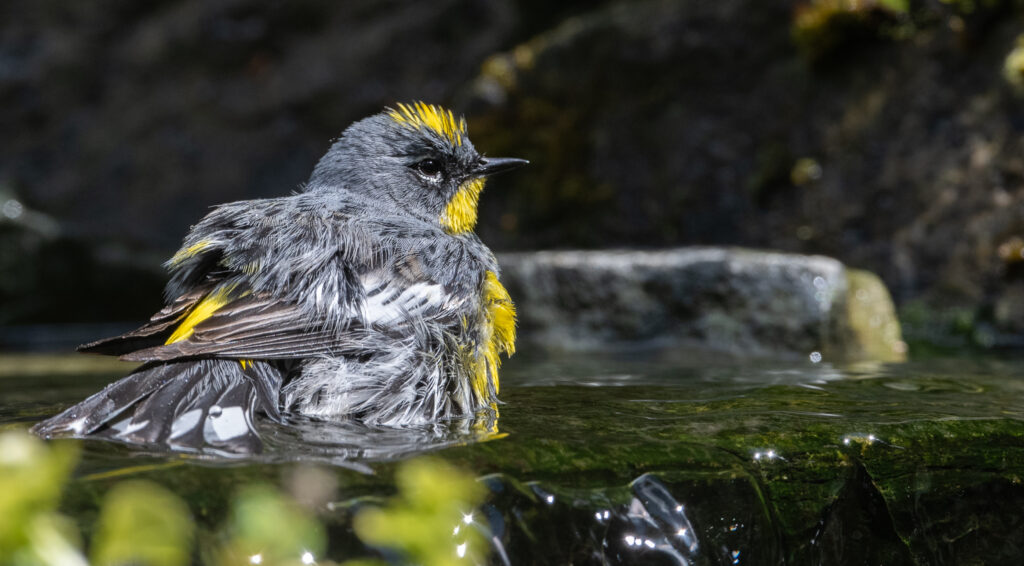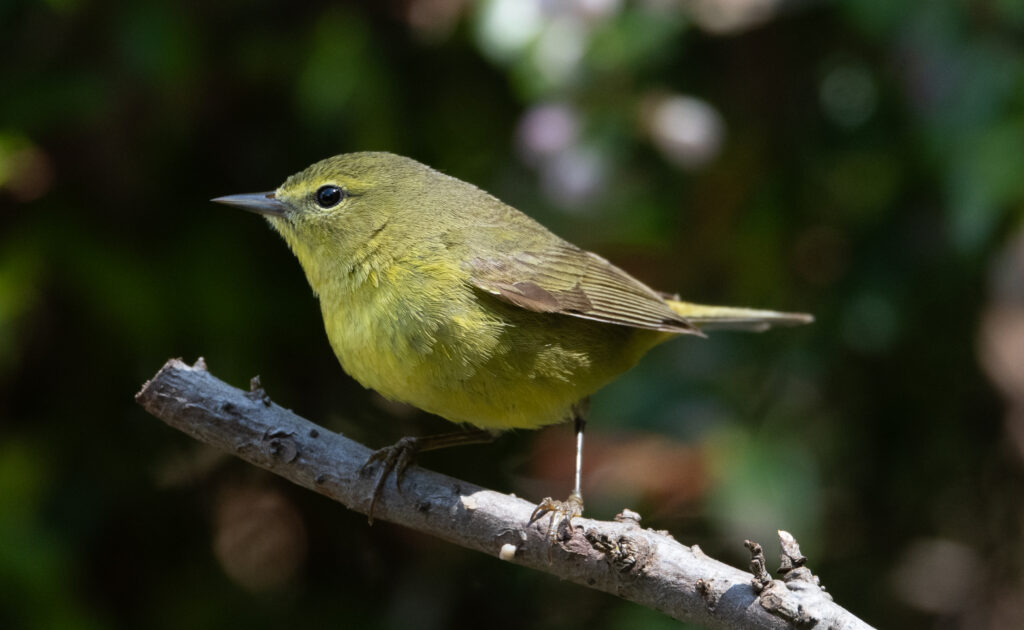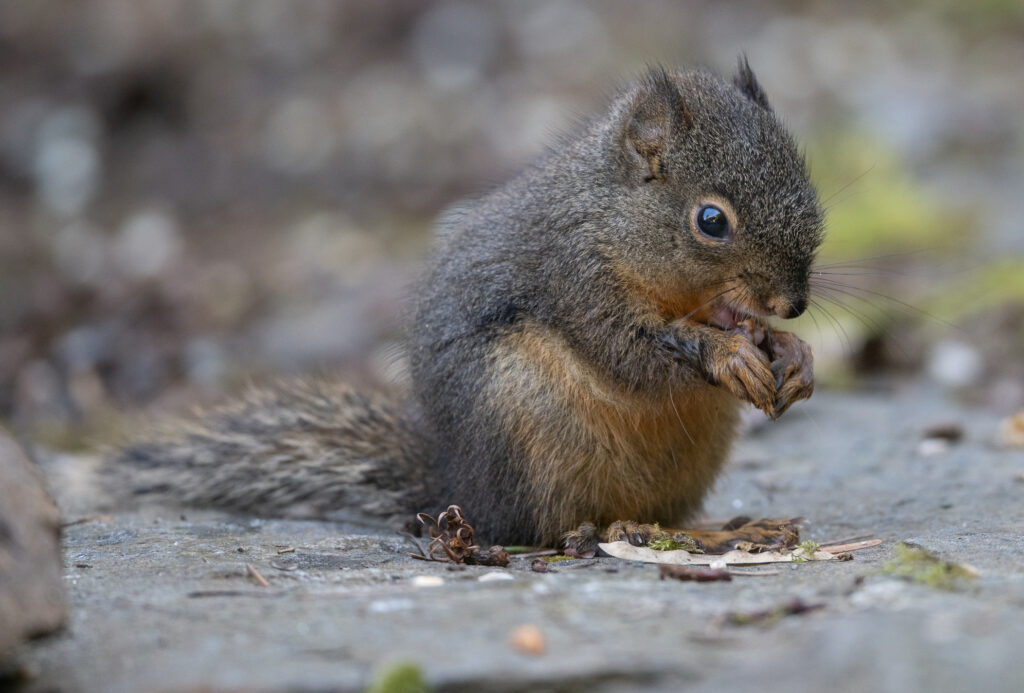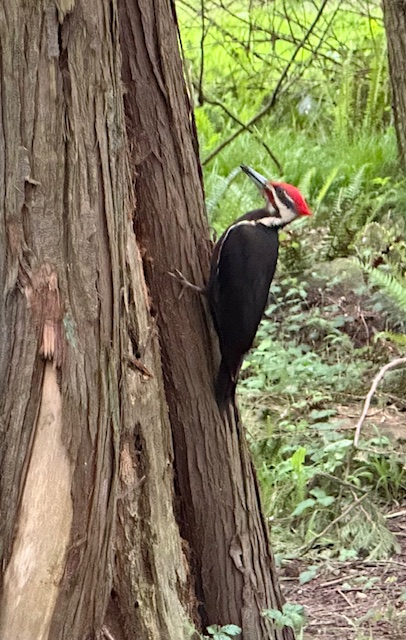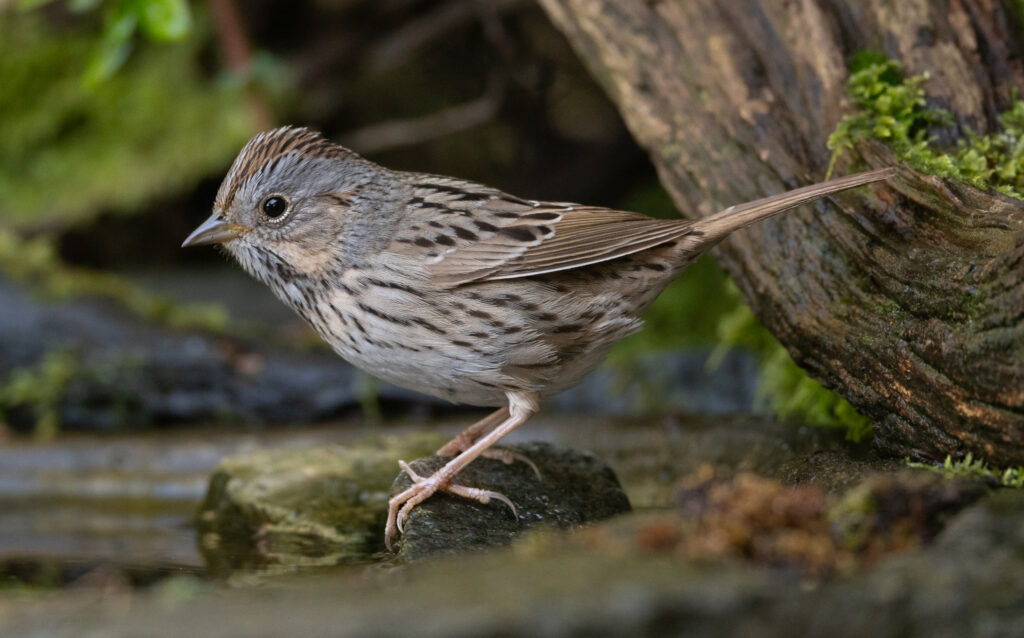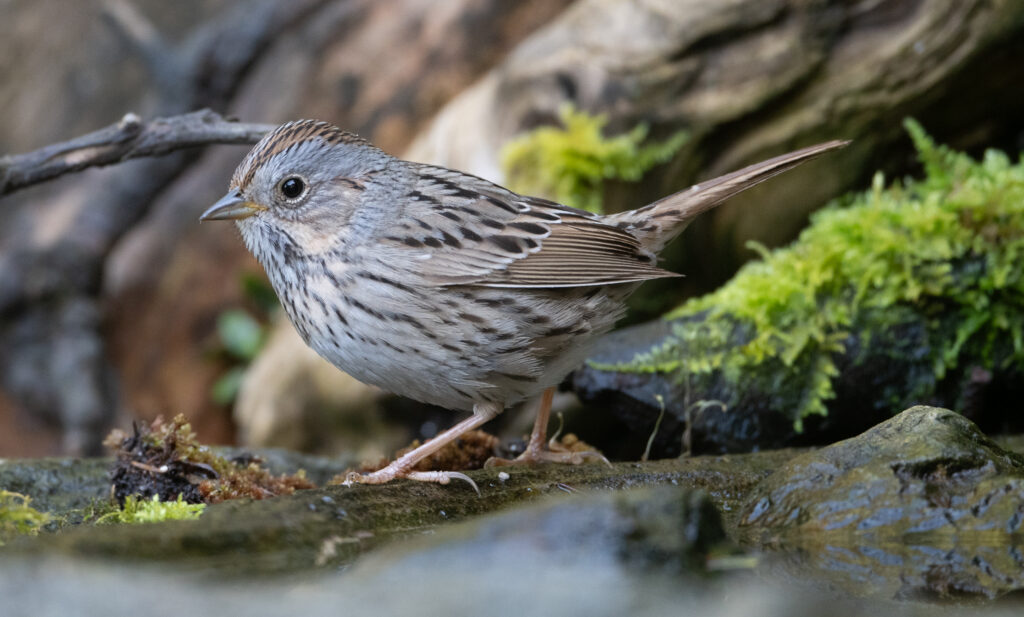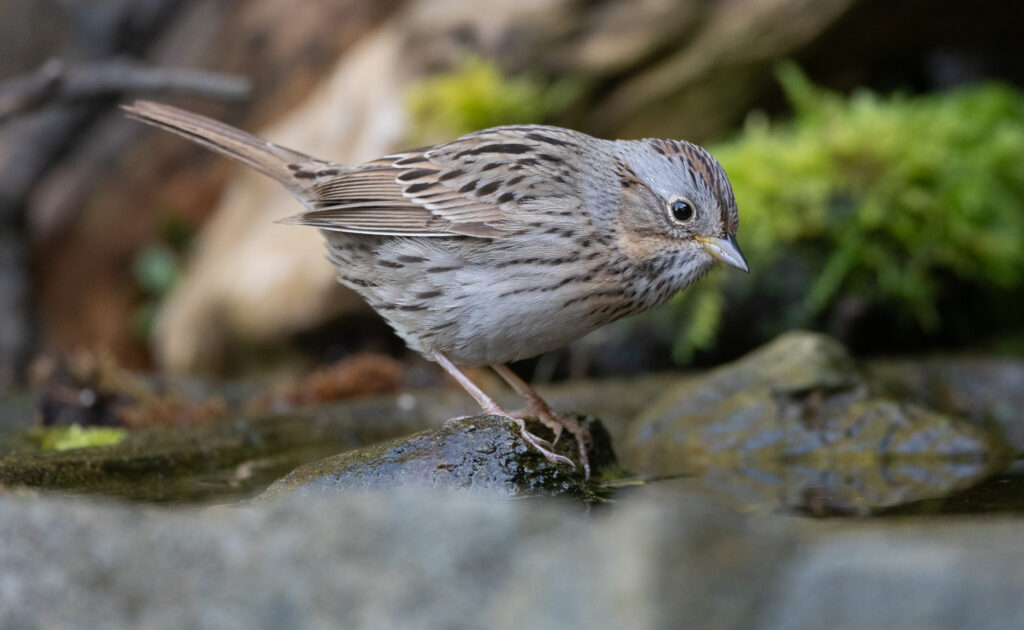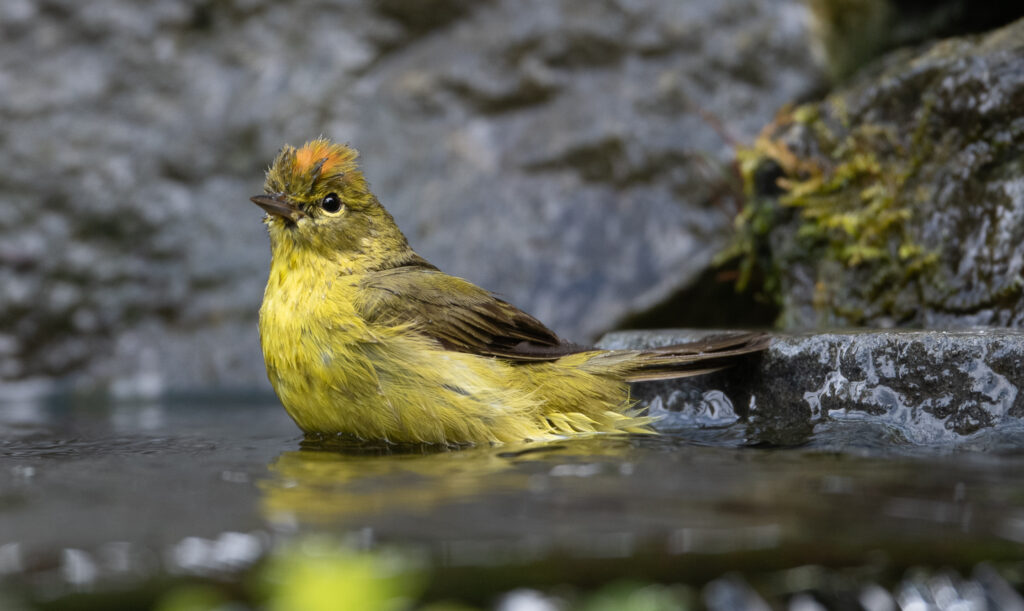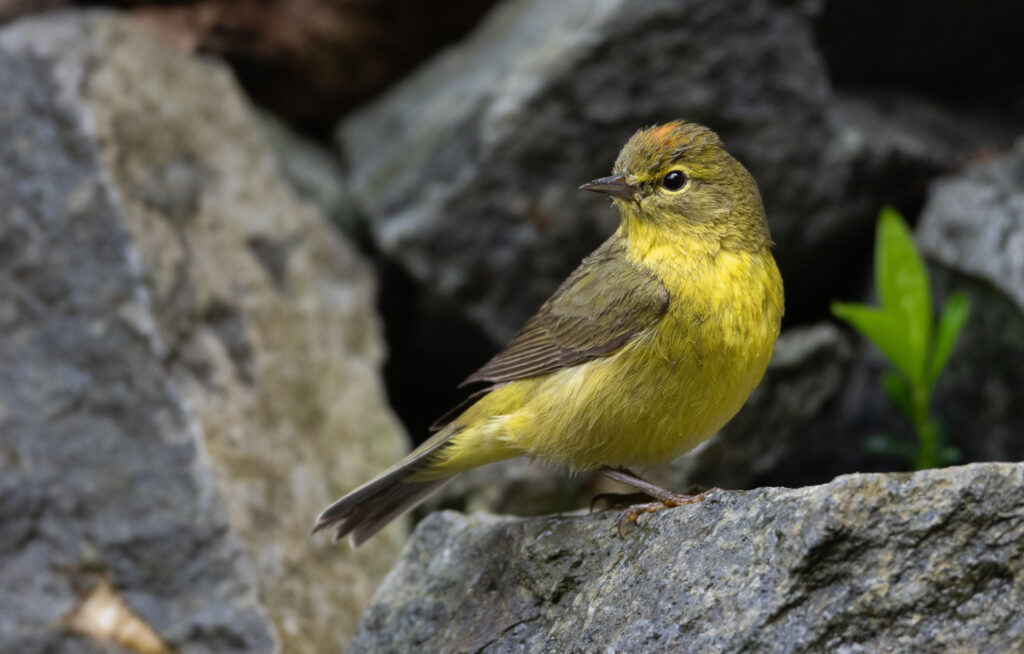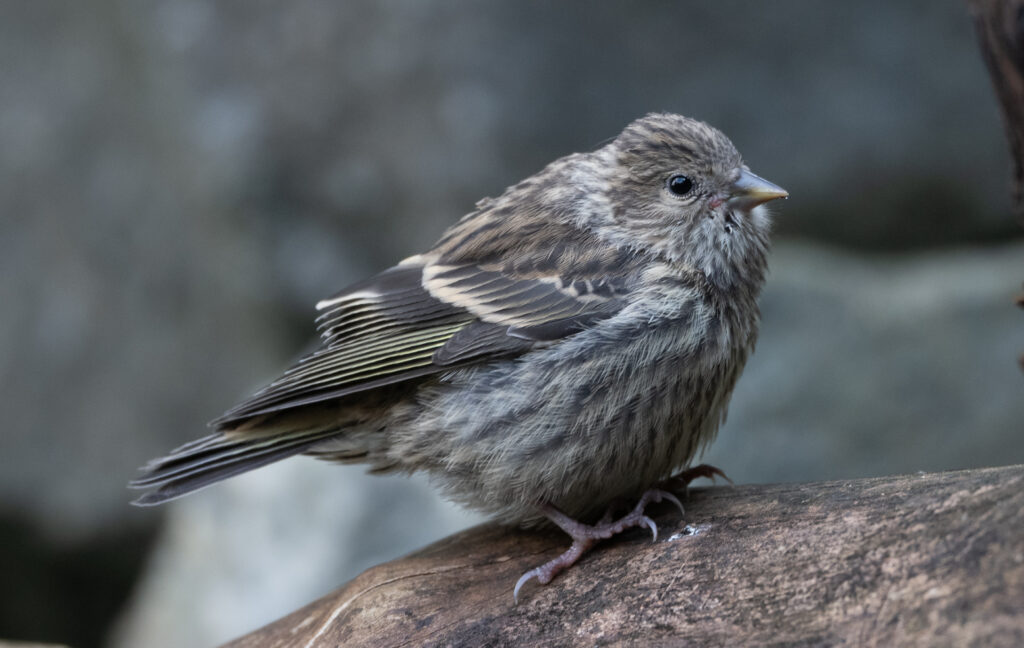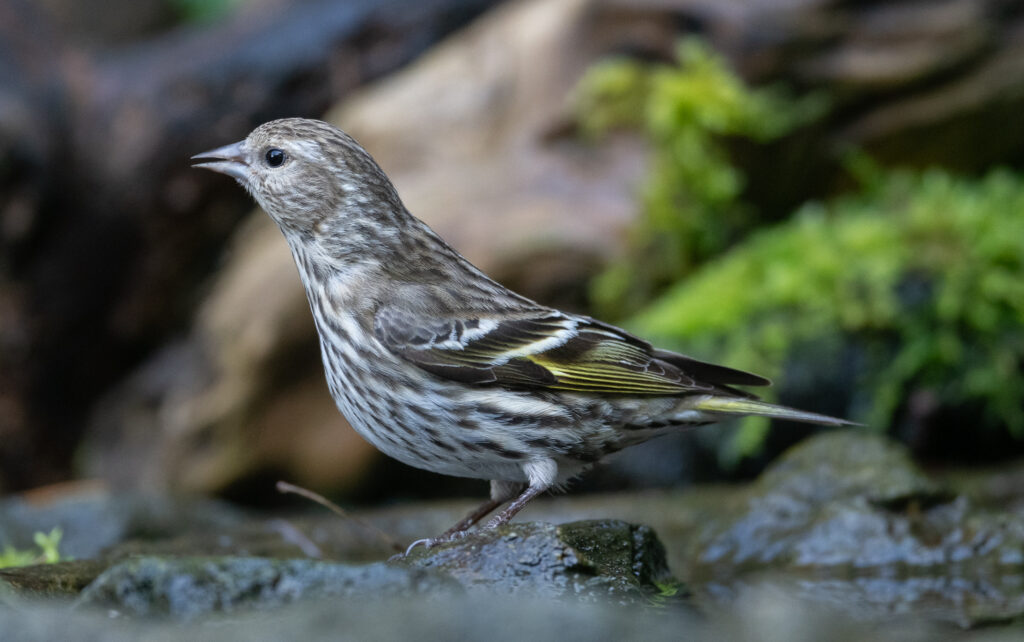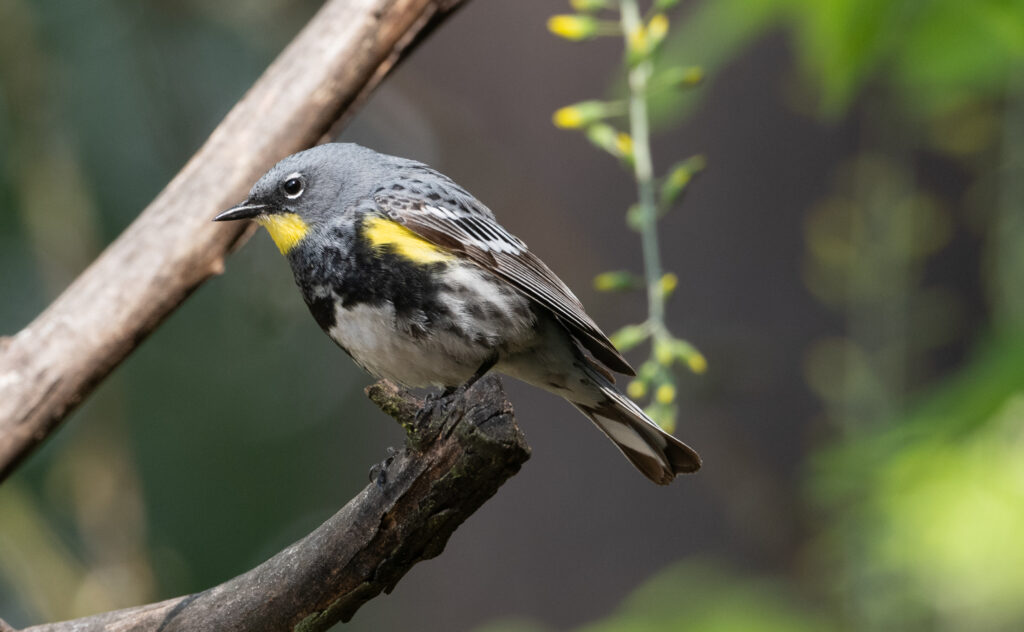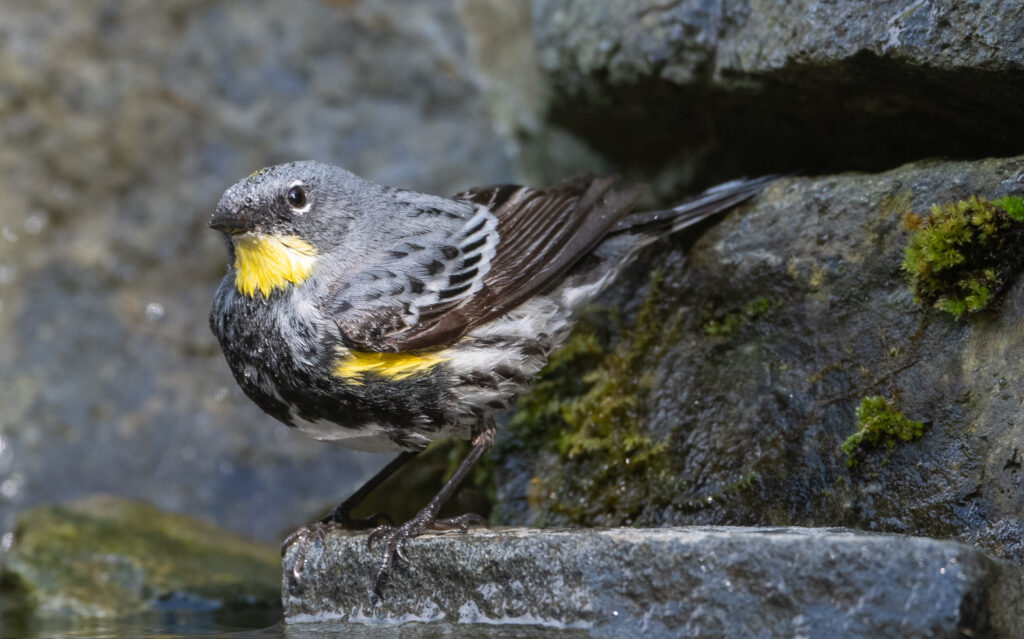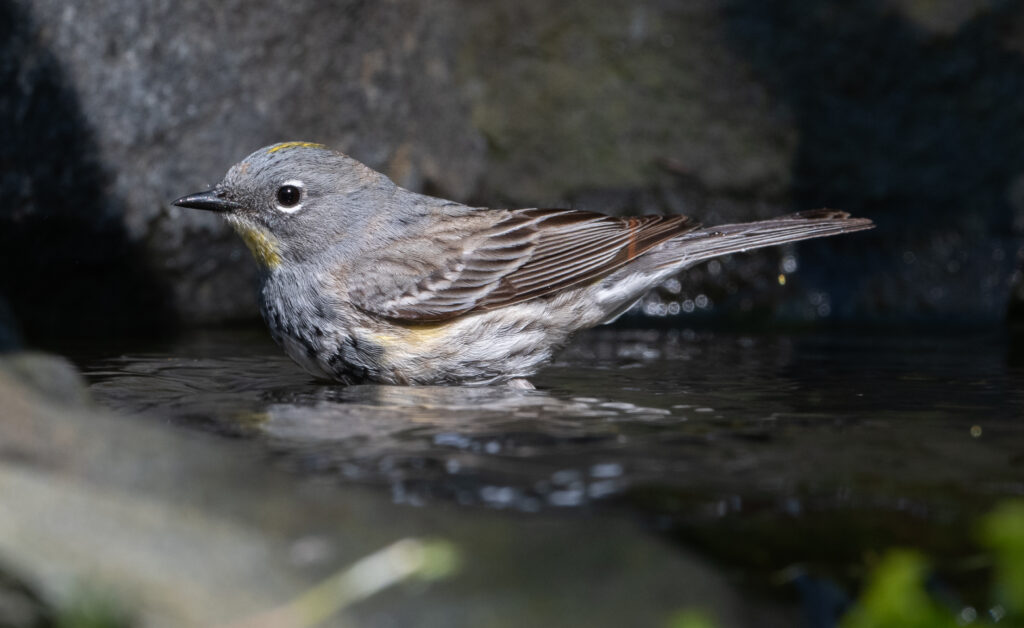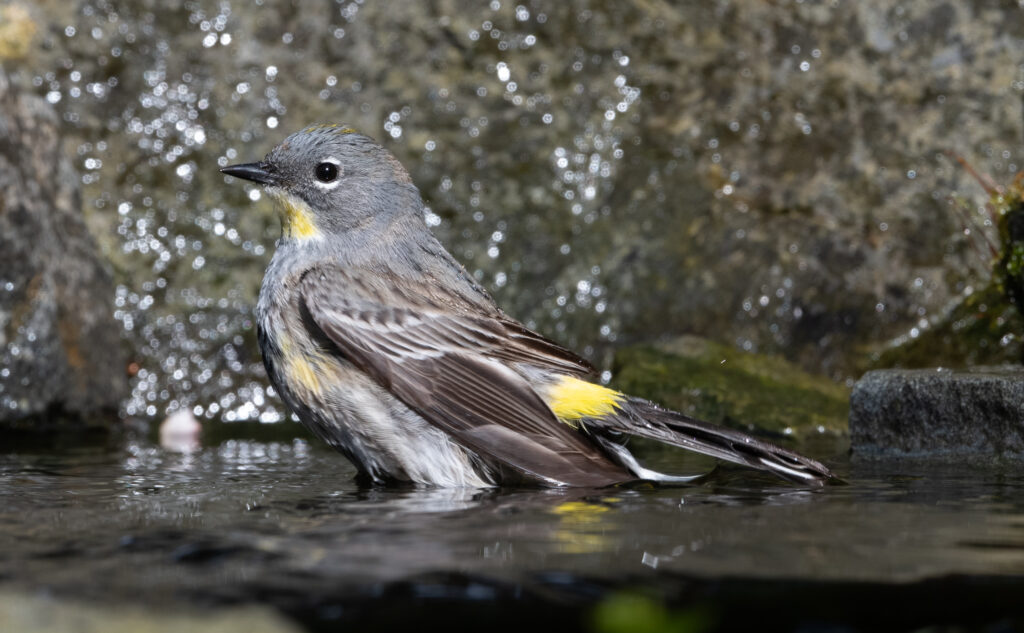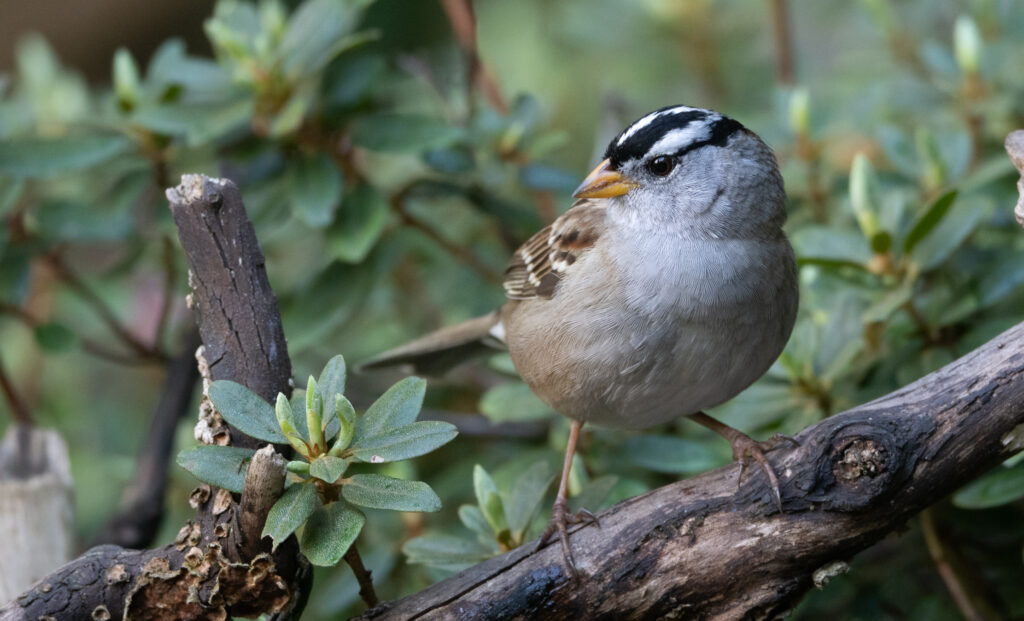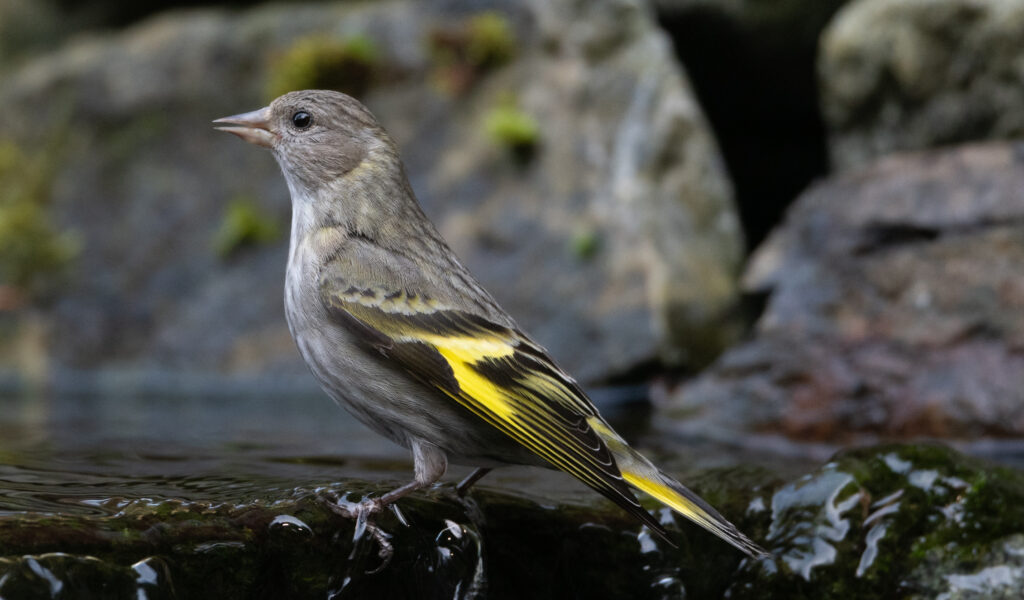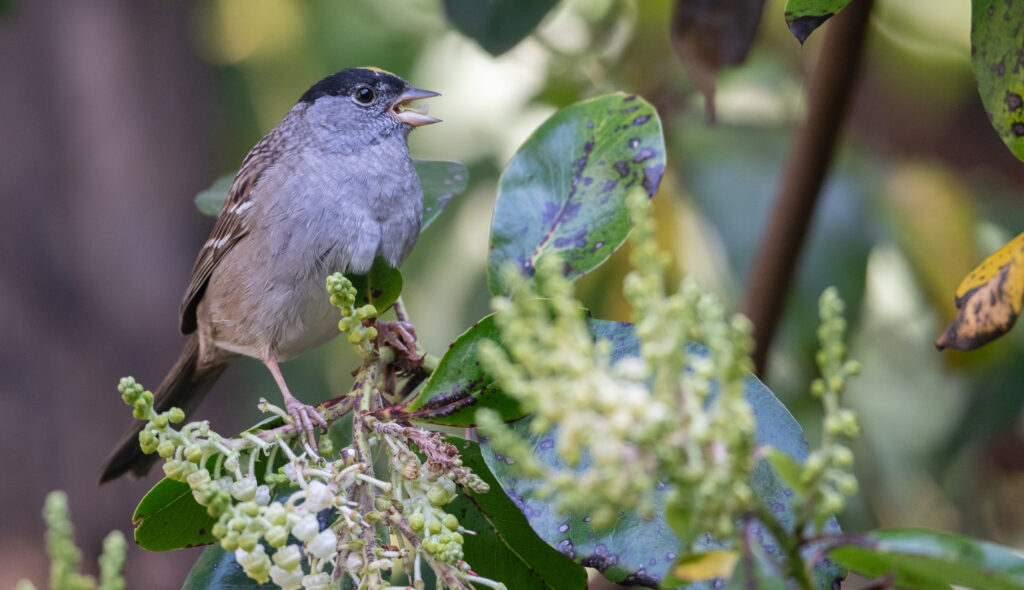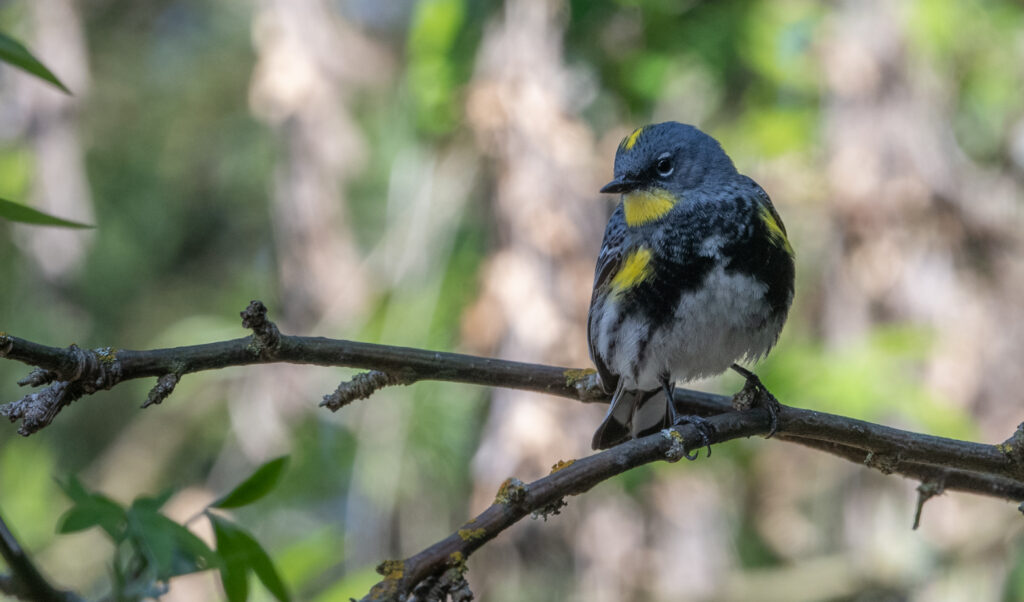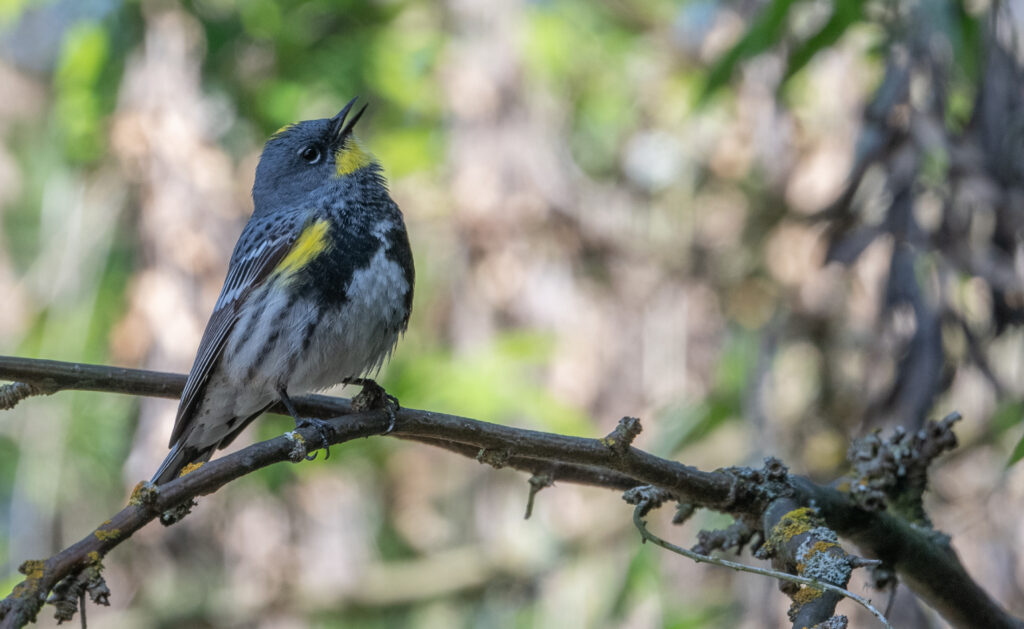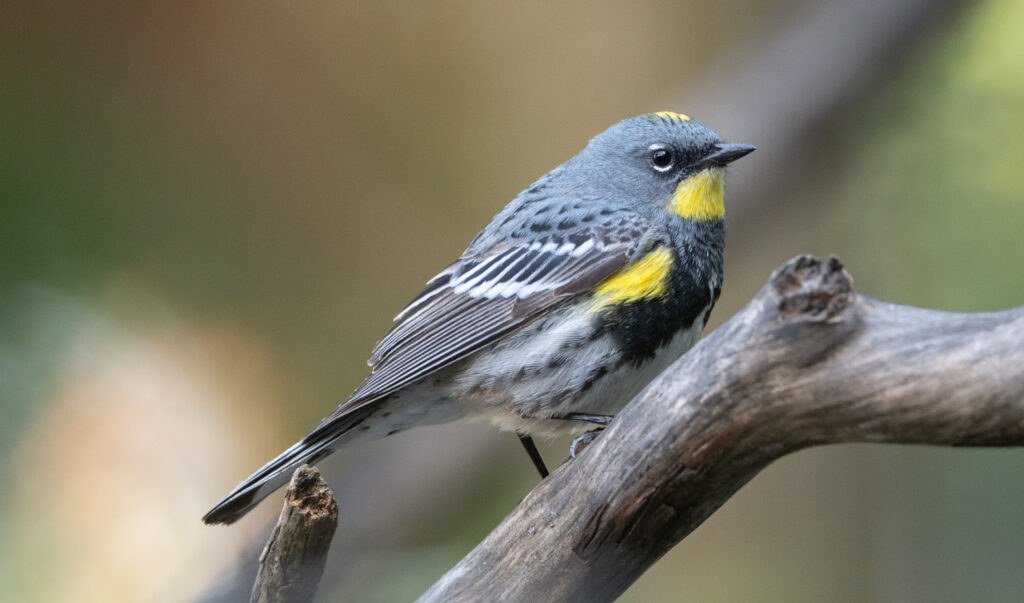While my focus in this post will be on May 10, I want to mention that on May 8 I saw my first Wilson’s warbler of the season (a male) in the yard. I was inside the house when I spotted the warbler bathing in the watercourse. I grabbed my camera but had trouble inserting a media card, and by the time I got to the yard the bird was gone! I waited around for some time hoping the warbler would return, but it did not so I missed the opportunity to record the event.
On May 10, two days later, I had the opportunity to sit outside beginning about 7am for about 50 minutes before meeting a friend for breakfast. During this time my second Wilson’s warbler (also a male) showed up, and this time I was able to obtain photos!
I was gone a substantial part of the morning but by the time noon rolled around I had tallied three more Wilson’s warblers and an Orange-crowned warbler which was a co-visitor on one of the sightings.
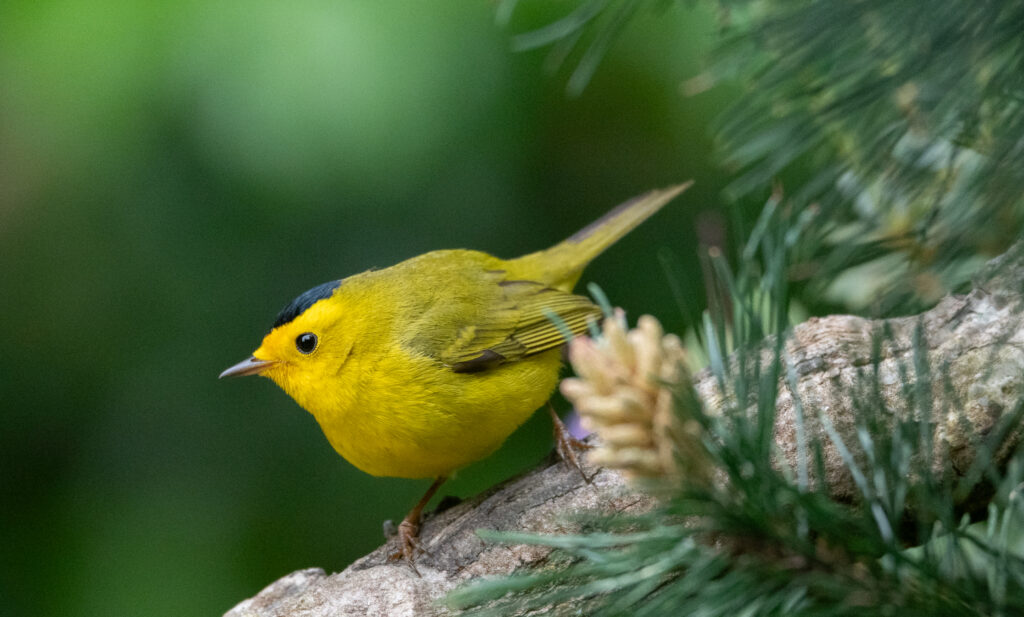
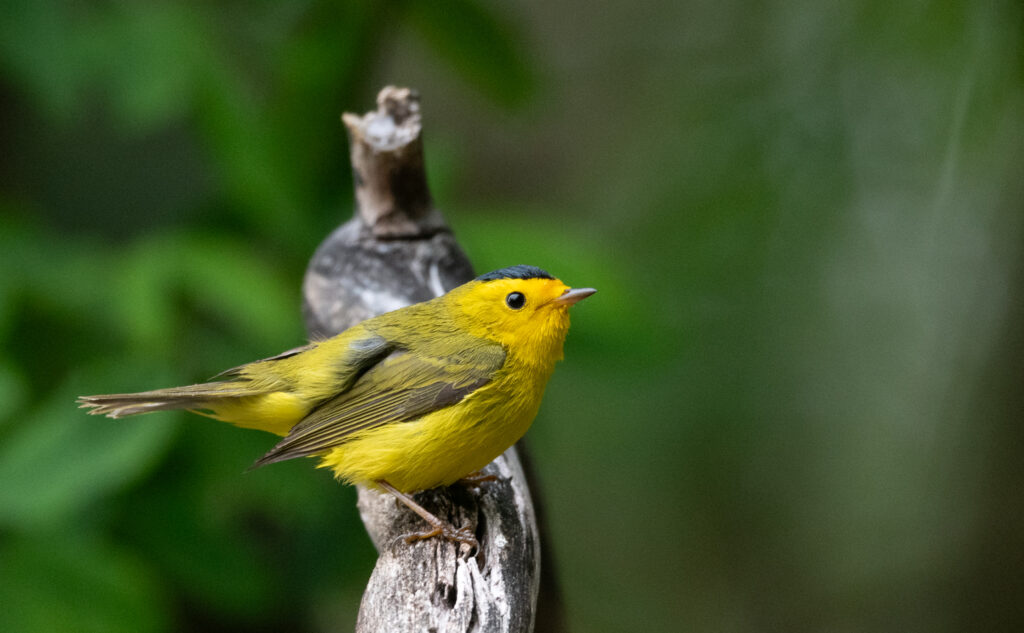
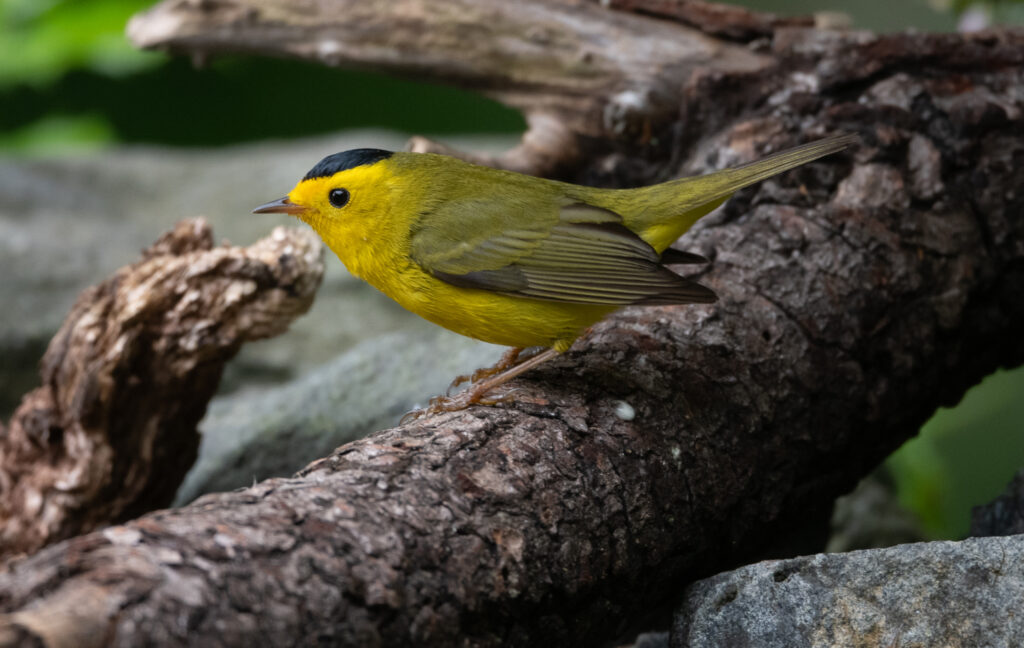
By the end of my birding day I had added another Orange-crowned warbler late for a total of two.
As exciting as this was, the afternoon was relatively slow birding… until my first Black-headed grosbeak (male) of the season appeared! The grosbeak visited the suet and sunflower/peanut pieces feeders and the farthest bird bath, hanging around the yard for probably about 15 minutes. I didn’t get any good photos but I was able to document the event.
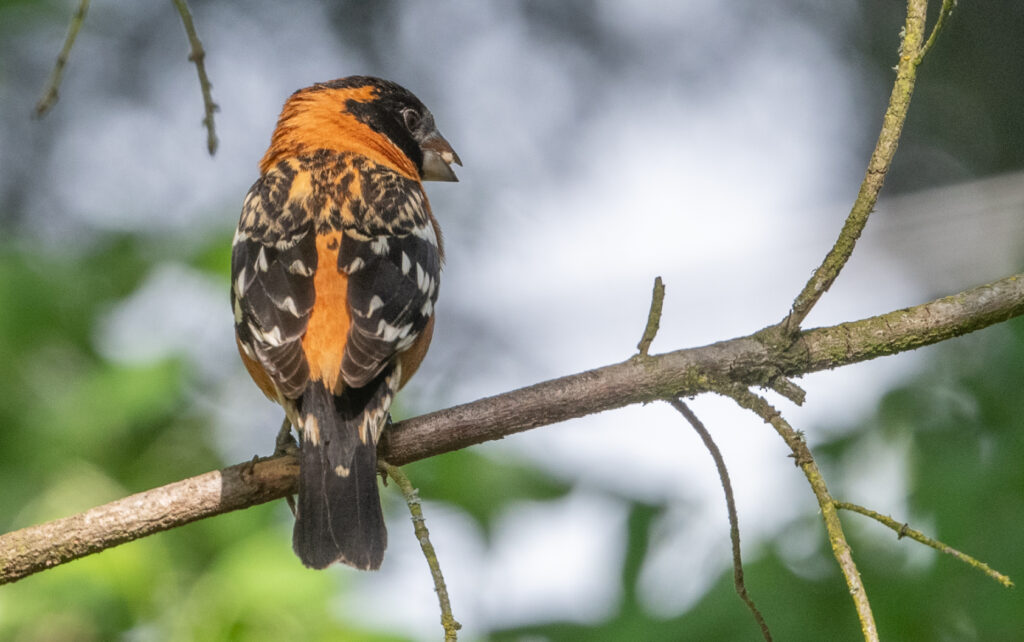
I had a friend join me for the latter part of the afternoon and while we were watching the grosbeak there was a loud and persistent song coming from outside the yard, which I thought might be a grosbeak even though the Merlin app was identifying it as a robin.
I set up an interesting experiment. I have been unable to distinguish an American robin’s call from a Black-headed grosbeak’s call and in the past I suspected that the Merlin identification of the grosbeak’s call might be incorrectly attributed to a robin. (I’ll own this as a personal problem!)
So this friend and I set up a little experiment. He activated his Merlin app to record and identify bird songs and I activated my Sibley app to play a grosbeak’s song. Without fail the Merlin app identified the grosbeaks’ songs as a grosbeak! It’s now clear to me that I need to train my ear more in this regard!
So this was my best yard birding day this season, with multiple sightings of three major migrants, and I’m not including Rufous hummingbirds, Turkey vultures, American goldfinches or White-crowned sparrows. (The latter two species I consider migrants as far as my yard/location is concerned).

